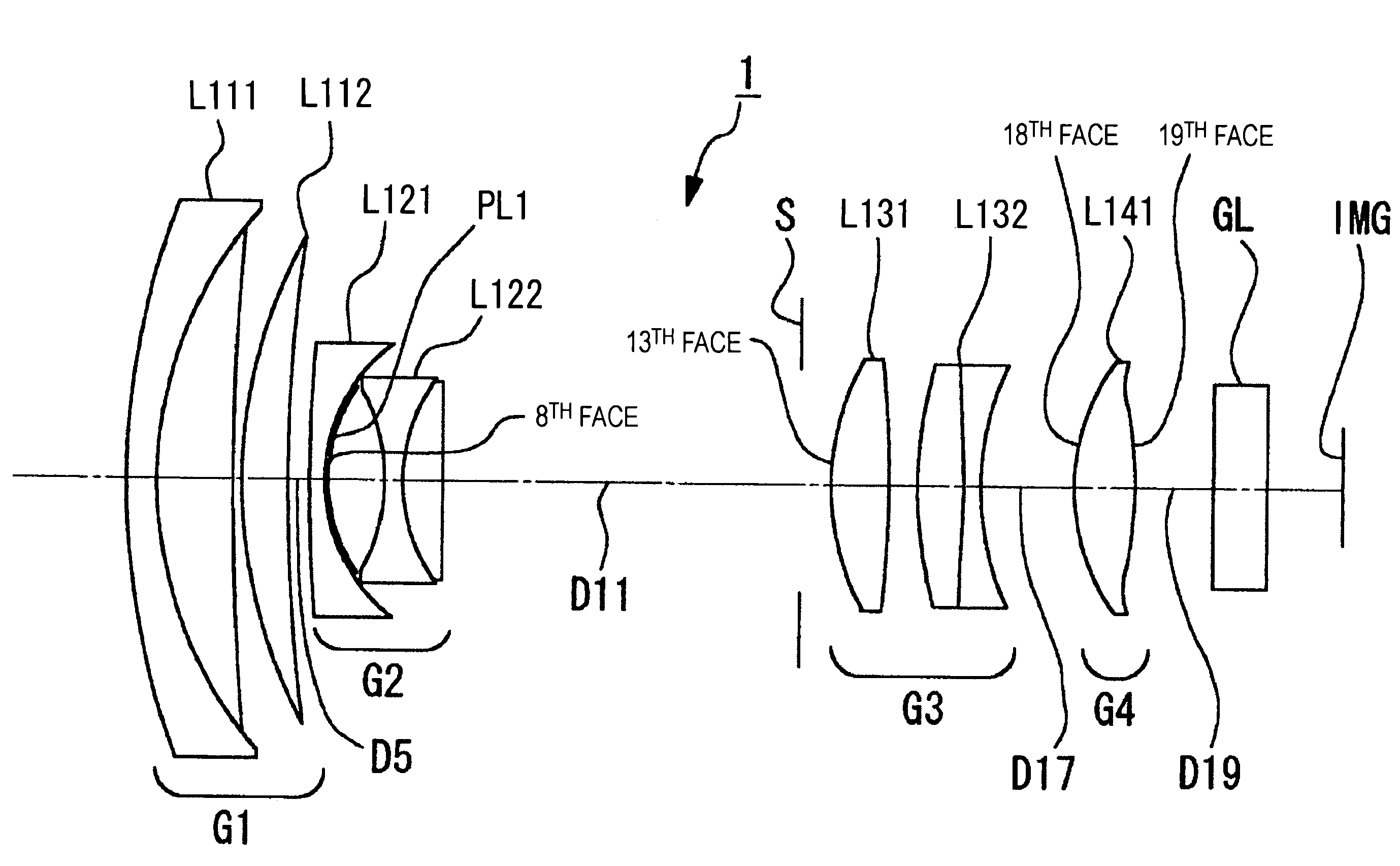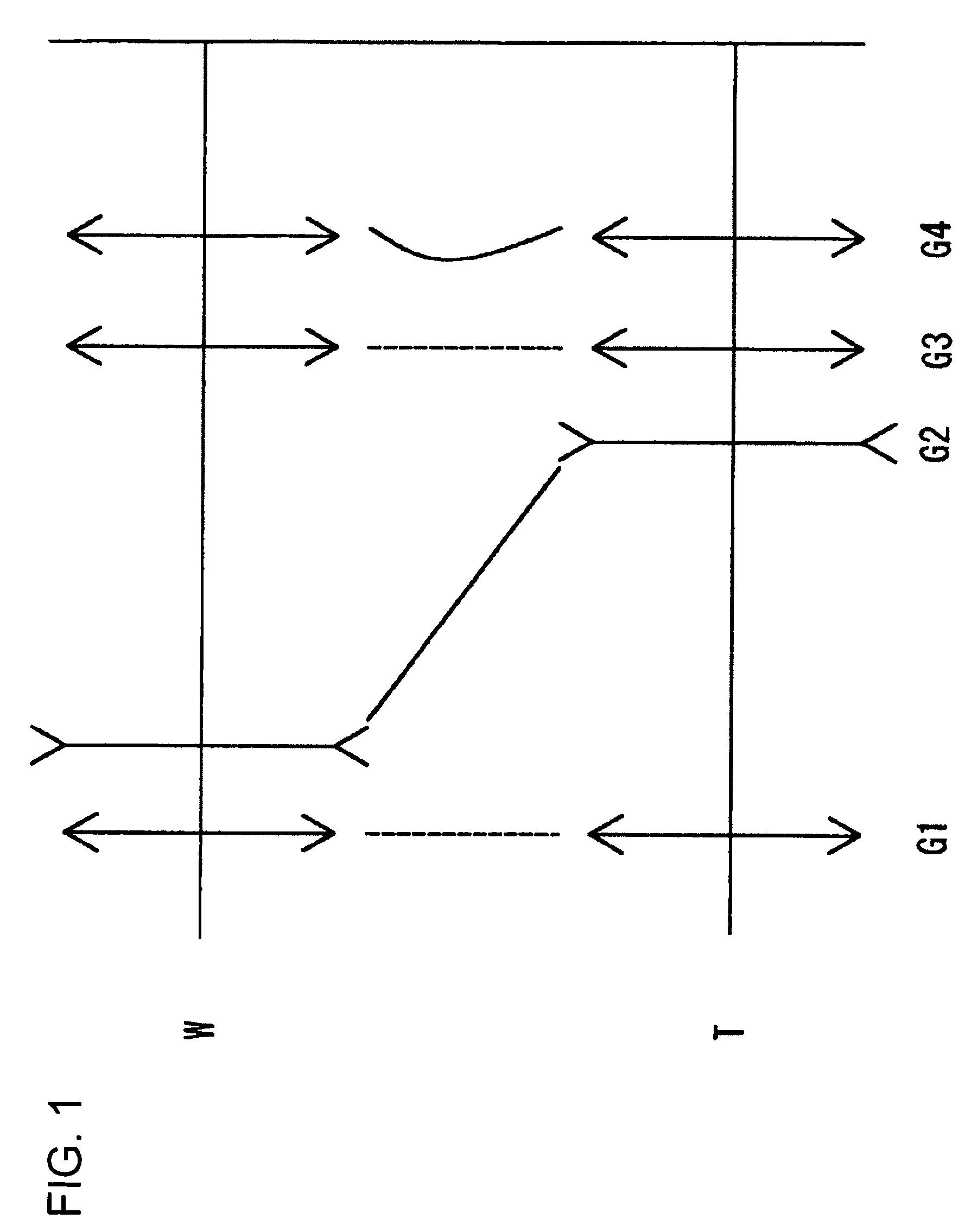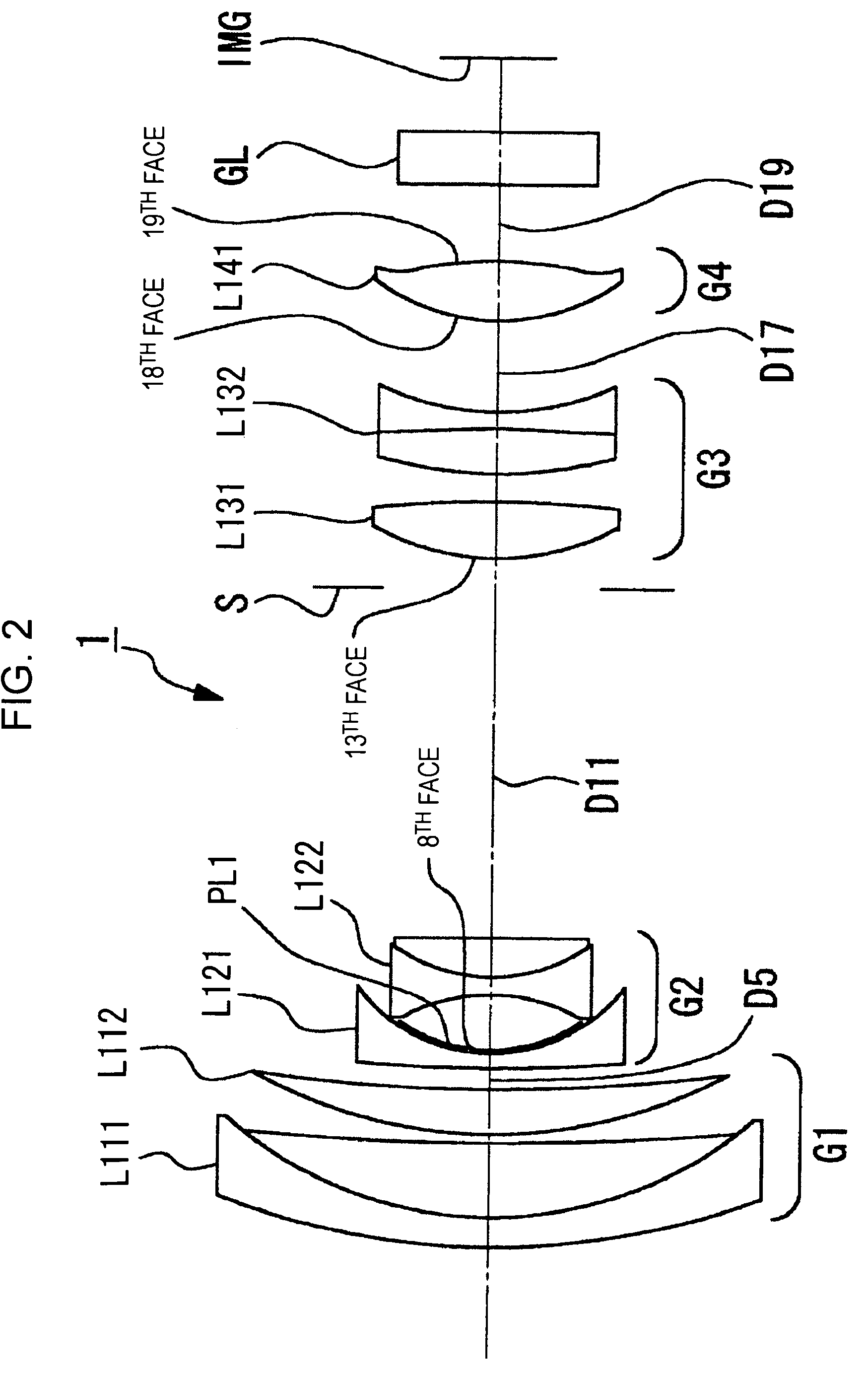Zoom lens and image-pickup apparatus
a zoom lens and image-picking technology, applied in the field of new zoom lenses and image-picking apparatuses, can solve the problems of luminous power shortage, reduced light-receiving area of individual photoelectric transducers, and increased noise effect, so as to achieve high-quality images and reduce the thickness of the second lens group
- Summary
- Abstract
- Description
- Claims
- Application Information
AI Technical Summary
Benefits of technology
Problems solved by technology
Method used
Image
Examples
embodiment 1
[0090]In the numerical embodiment 1, lens surfaces of 8th face, 13th face, 18th face, and 19th face are aspheric and aspheric factors are shown in Table 2.
[Table 2]
[0091]In the first embodiment 1, during the changing of lens positions, an axial interplanar space D5 between the first lens group G1 and the second lens group G2, an axial interplanar space D11 between the second lens group G2 and the aperture diaphragm S, an axial interplanar space G17 between the third lens group G3 and the fourth lens group G4, and an axial interplanar space D19 between the fourth lens group G4 and the protection glass GL are variable. Each variable axial interplanar space in the numerical embodiment 1 is shown in Table 3 with the focal length f.
[Table 3]
[0092]Table 4 below shows corresponding values to the conditional equations (1) to (4) in the numerical embodiment 1.
[Table 4]
[0093]FIGS. 3 to 5 show aberrations in an infinite-distance focusing state in the numerical embodiment 1; FIG. 3 shows aberra...
embodiment 2
[0099]In the numerical embodiment 2, lens surfaces of 8th face, 12th face, 19th face, and 20th face are aspheric and aspheric factors are shown in Table 6.
[Table 6]
[0100]In the second embodiment 2, during the changing of lens positions, the axial interplanar space D5 between the first lens group G1 and the second lens group G2, the axial interplanar space D11 between the second lens group G2 and the third lens group G3, an axial interplanar space G18 between the third lens group G3 and the fourth lens group G4, and an axial interplanar space D20 between the fourth lens group G4 and the protection glass GL are variable. Each variable axial interplanar space in the numerical embodiment 2 is shown in Table 7 with the focal length f.
[Table 7]
[0101]Table 8 below shows corresponding values to the conditional equations (1) to (4) in the numerical embodiment 2.
[Table 8]
[0102]FIGS. 7 to 9 show aberrations in an infinite-distance focusing state in the numerical embodiment 2; FIG. 7 shows aber...
embodiment 3
[0108]In the numerical embodiment 3, lens surfaces of 8th face, 13th face, 18th face, and 19th face are aspheric and aspheric factors are shown in Table 10.
[Table 10]
[0109]In the third embodiment 3, during the changing of lens positions, the axial interplanar space D5 between the first lens group G1 and the second lens group G2, the axial interplanar space D11 between the second lens group G2 and the aperture diaphragm S, the axial interplanar space G17 between the third lens group G3 and the fourth lens group G4, and an axial interplanar space D19 between the fourth lens group G4 and the protection glass GL are variable. Each variable axial interplanar space in the numerical embodiment 3 is shown in Table 11 with the focal length f.
[Table 11]
[0110]Table 12 below shows corresponding values to the conditional equations (1) to (4) in the numerical embodiment 3.
[Table 12]
[0111]FIGS. 11 to 13 show aberrations in an infinite-distance focusing state in the numerical embodiment 3; FIG. 11 ...
PUM
 Login to View More
Login to View More Abstract
Description
Claims
Application Information
 Login to View More
Login to View More - R&D
- Intellectual Property
- Life Sciences
- Materials
- Tech Scout
- Unparalleled Data Quality
- Higher Quality Content
- 60% Fewer Hallucinations
Browse by: Latest US Patents, China's latest patents, Technical Efficacy Thesaurus, Application Domain, Technology Topic, Popular Technical Reports.
© 2025 PatSnap. All rights reserved.Legal|Privacy policy|Modern Slavery Act Transparency Statement|Sitemap|About US| Contact US: help@patsnap.com



